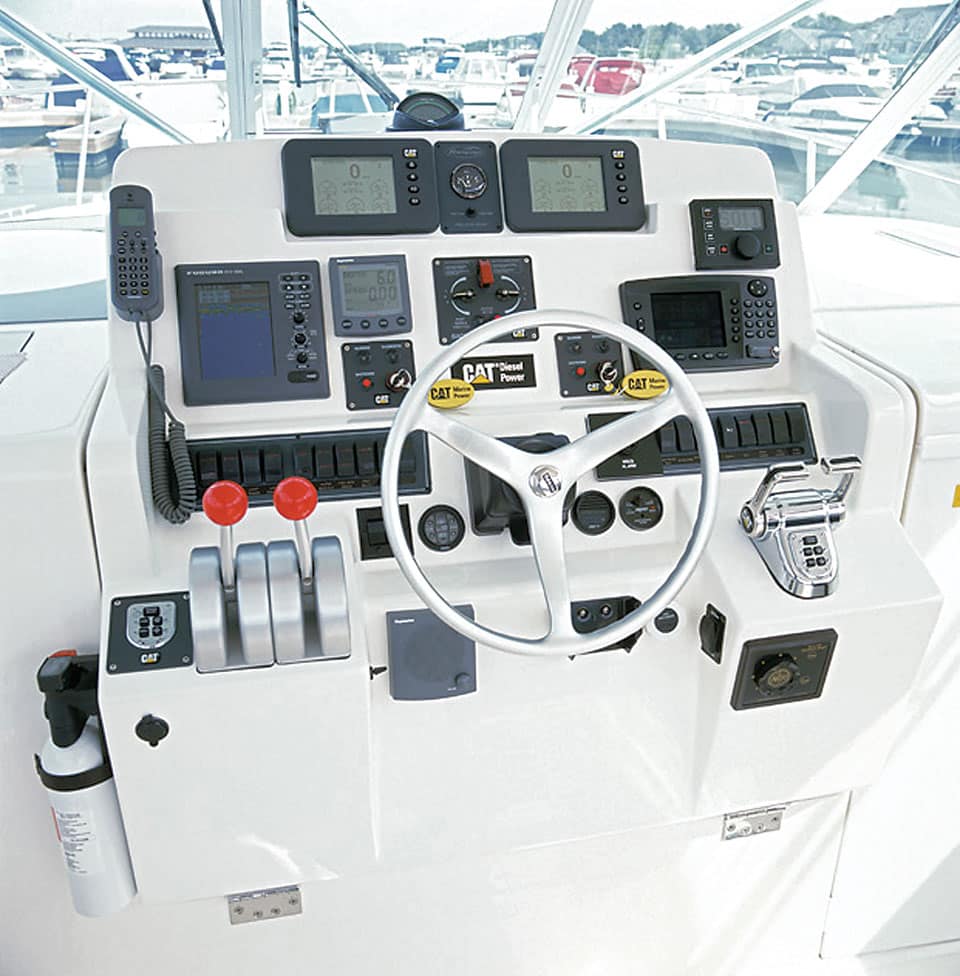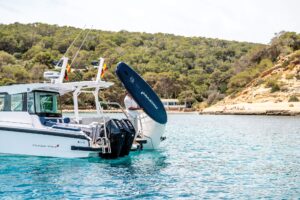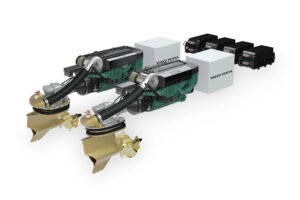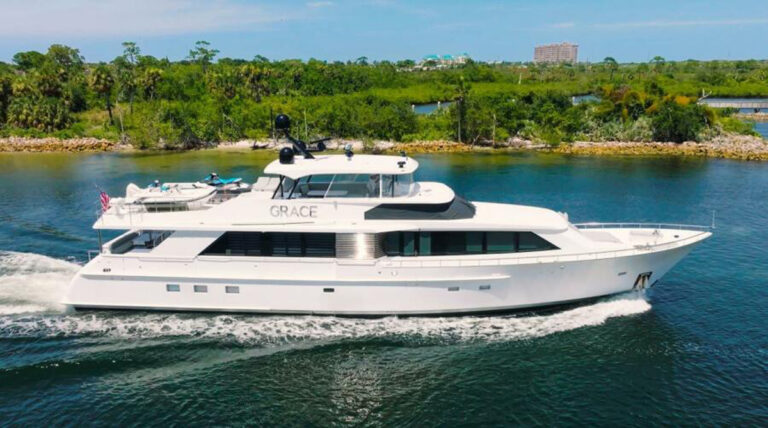
Shipshape 0412
Electronically governed diesel engines monitor themselves to warn of problems before a failure occurs. They also provide skippers information otherwise seen only on mechanical engines when an engine surveyor is aboard — information that helps with day-to-day operation. Real-time fuel consumption, for example, dials in the best economy for cruising conditions, and exact load percentages help gauge engine health. But where, exactly, do those numbers come from and how accurate are they?
Let’s start with engine load — something only guessed at, based on exhaust gas temperature, in mechanical engines. “The electronic control module (ECM) is calculating load based on the amount of fuel injected into the engine versus the maximum amount it could inject at that rpm,” said Ryan Kamphuis, a senior marine sales engineer for MTU.
“If a 1,000-horsepower engine reads 90 percent load at cruising speed, and that rpm represents about 90 percent of total engine power at full throttle, then the engine is actually producing around 810 horsepower,” he said — 90 percent of 90 percent.
Knowing exact engine load through a wide range of rpm helps judge propellers. “I might see an engine overloaded as the boat comes up on plane, or I might see a propeller overloaded before the engine reaches its maximum torque,” said Greg Platzer, whose company, Platzer Marine Propulsion, creates custom propellers. “I can adjust those props to better match the engines.”
But load readings are theoretical calculations, not actual torque turning the propeller. Platzer sometimes uses strain gauges to measure minute twist in propeller shafts and accurately calculate actual engine horsepower.
“In general, electronic engines’ load calculations are accurate within a few percent, but once an engine exceeds its rated rpm, those algorithms often aren’t correct,” Platzer said. The result might be a boat that looks like it’s propped correctly, yet actually could carry a bit more pitch in the propeller. “Fuel burn is an accurate indicator.” How fuel consumption increases through those highest few rpm should indicate actual load.
A change in engine load at cruising speed likely indicates a developing problem. One or 2 percent variance between engines is normal. Since both port and starboard engines rotate in the same direction, port transmissions typically impart 1 percent higher load to turn that shaft in the opposite direction. Bent or misaligned shafts also increase load slightly, but large variations demand attention. “If an injector isn’t working right, or there is some other problem within a cylinder, the ECM won’t know that cylinder isn’t providing all of its torque,” Kamphuis said. The engine compensates with more fuel to all cylinders, increasing indicated load at a given rpm and lowering maximum rpm at wide-open throttle.
But rpm at full throttle isn’t the tell-all indicator it was in years past. Emissions calibrations target maximum rpm. Many engines decrease available power beyond that rpm to ensure Environmental Protection Agency compliance. The key to assessing electronic engine health, then, is knowing exactly what each engine’s load should be at cruise rpm and rated rpm — not wide-open throttle.
There are other factors to consider as well. When an engine won’t turn at full rpm but the load seems normal, fuel filters could be clogged — the engine simply can’t get enough fuel to make full power. But not definitively so. “If the electronic control module senses it doesn’t have enough turbo boost, it tells the engine not to add more fuel,” limiting both rpm and load, said Charlie Schloemer, president of Palm Beach Power in West Palm Beach. Low fuel pressure and elevated fuel temperature are good indicators of clogged secondary fuel filters. Most electronic engines also display turbo boost. Electronic engine displays can help diagnose problems, even over the phone, Schloemer said, “but you have to know what those readings should be when the boat is running well.”
Checking those parameters periodically can also show needed maintenance. Increased intake manifold temperature, for example, might indicate a dirty intercooler. Elevated engine coolant temperature or oil temperature is a sign that cooling systems need to be serviced. “Each engine is different,” Schloemer said. “Ask your mechanic what’s important to watch on your boat.”
Engine load is based largely on fuel calculations, but just how accurate are they? “There is no fuel measuring device in the engine. The ECM calculates consumption based on injector characteristics, how long the injectors are open, fuel pressure and fuel density based on fuel temperature,” Kamphuis said. “But there could easily be a 5 percent variation in fuel, even though it’s perfectly acceptable No. 2 diesel.” Differences in fuel viscosity alter fuel flow through injectors, and injectors might provide a bit more or less fuel than the ECM anticipates.
Fuel consumption calculations favor accuracy at cruise rpm — typically better than 5 percent. “When you’re at 800 rpm, it could be off by a lot more, but you’re not burning much fuel,” Kamphuis said, so total fuel burned remains fairly accurate. Still, boats traveling long distances far below normal cruising speed shouldn’t rely on ECM fuel calculations.
Besides engine load and fuel used, most display readings are measured with pinpoint accuracy, although minor variations still crop up. Kamphuis told me that a few degrees of difference in coolant temperatures between engines could result from variations in the way seawater is plumbed or indicate the presence of more marine growth on one side, maybe caused by exposure to sunlight. Sensors can also malfunction. “If a value falls outside a normal range, the ECM replaces it with a standard value and sends a sensor defect alarm to the engine display,” Kamphuis said. “We have checks and balances so you won’t be cruising along thinking things are great when something is amiss downstairs.”
In the end, both Schloemer and Kamphuis say engine-provided information is quite accurate and engines monitor themselves far better than we can. Still, engine-savvy skippers use electronic information to head off problems early.
“Shipshape” from our April 2012 issue.









